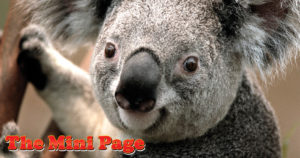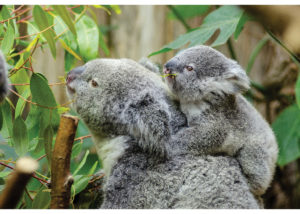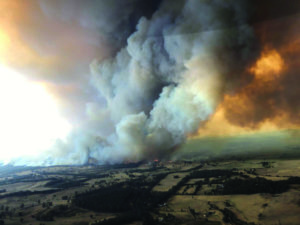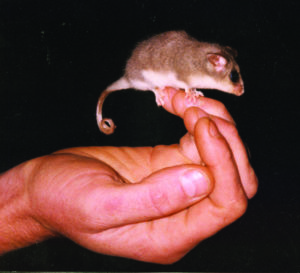
AMP | Kids is proud to partner with The Mini Page, celebrating over 50 years of providing engaging and fun learning opportunities to young readers across the country. This feature was originally syndicated in newspapers the week of March 14 – March 20, 2020. It is distributed digitally here with permission from Andrews McMeel Syndication. Enjoy and share with the young learners in your life!
During the recent bushfires in Australia, the news has been full of reports of animals being stranded among the flames and smoke. Experts believe more than 1 billion native animals have died in the fires.
One of Australia’s more recognizable animals is the koala. Thousands of these cute creatures may have died during the fire crisis, but humans are helping rescue as many as possible.
Marsupials
While we sometimes call koalas ‘’bears,’’ they are not. Koalas are marsupials (mar-SOOP-ee-uls). Marsupial moms raise babies in their pouches.
When a koala is born, it is hairless and weighs less than an ounce. It is about the size of a jelly bean. After birth, the baby, called a joey, crawls into its mother’s pouch, where it attaches itself to one of her two nipples and nurses for about six or seven months. When it comes out of the pouch, it is fully developed.
Koala babies must eat some of their mom’s droppings while they are very young. These “pap” droppings contain certain bacteria that enable the koala to digest the special food it eats for the rest of its life.
Picky eaters
Koalas eat only the tender leaves and bark of certain kinds of eucalyptus (yoo-kuh-LIP-tuss) trees. Many kinds of these trees grow in Australia, but koalas are picky about the ones they will eat.
Since there is so much moisture in the leaves, koalas drink very little water. They also may eat dirt when they come down to the ground to move from tree to tree. The dirt may help their digestion.
Their diet of about a pound of eucalyptus leaves a day does not supply them much energy. They spend 18 to 21 hours a day asleep in their treetop homes. Koalas are most likely to be awake at dawn and dusk.
Habitat loss

Bushfires burn in Australia in December 2019.
Aside from the bushfires that have been destroying forests in Australia, the biggest threat to koalas is loss of their habitat from people clearing the land for buildings, roads and homes. Experts also say “dieback,” when eucalypt forests are damaged and die because of nearby development, destroys the koalas’ homes.
Other marsupials
• Kangaroos. There are about 60 different types of kangaroos. Some can grow to be 6 feet tall and weigh about 200 pounds. They are the world’s largest marsupials.
Kangaroos usually move about in the late afternoon or at night, eating grasses and other plants.
They can easily leap higher than a grown man stands, and can travel
almost 50 miles per hour.
• Wombats. People don’t get to see wombats very often. They live only in Australia. During the day, wombats stay underground, sleeping. They don’t usually come out of their burrows until night.
Wombats dig long underground tunnels, or burrows. A group of wombats may share the burrow.
• Pygmy possums. The pygmy possum is one of the world’s tiniest marsupials. It might weigh just a half-ounce and be only 3 inches long. It moves about mostly at night, feeding on nectar and pollen.

Resources
On the Web:
At the library:
- Jimmy the Joey: The True Story of an Amazing Koala Rescue by Deborah Lee Rose
Teachers: For standards-based activities to accompany this feature, visit Andrews McMeel Syndication. And follow The Mini Page on Facebook!
